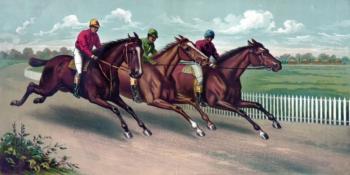The Bookworm Gambler’s Digest: Bringing Down The House
Posted: June 8, 2015
Updated: June 7, 2023

The recount of the true story of an MIT students group willing to do anything to win at Blackjack.
If you’re into gambling, more specifically Blackjack, you have probably already heard about the MIT Blackjack Team. If you have, all the better, you’ll absolutely love the book for its familiarity and atmosphere that is bursting with everything gambling-related. If you haven’t, no problem, you will be fascinated by the numbers and the system worked out by this merry band of go-getters. Step into the world of exams, parties, student drama… oh, and taking casinos for over three million dollars. With a story like that, it was no surprise when the book was made into a movie, 21, with great actors such as Kevin Spacey and Kate Bosworth.
• Group won more than USD 3 million
• Card counting as main strategy
• A couple of kids: the nightmare of casinos
The protagonist of this book, Kevin Lewis, was cherry picked by your typical evil-mastermind former professor to join the MIT Blackjack Team. It soon becomes obvious that this card-counting tactic at luxury casinos is nothing like mobile betting. This small group managed to work out a card counting strategy that helped them win crazy amounts of money in various US casinos. The ethics are questionable, but the idea is genius. And, since it is not considered cheating, the process is legal. It is just a matter of paying very close attention to the number of cards.
A game of rollers and spotters
The main idea of their system was based on secret signals between spotters and high-rollers. A spotter would take a tour around tables in the casino and play at as many tables as possible. While doing this, they would try to keep record of the cards at each table. When they sensed that the game at one or the other table was heating up, they would inconspicuously alert the high roller. Even after the high roller appeared, the spotter’s job was to keep playing while constantly letting his associate know how high the count was at the moment. This genius system was based on innocent questions and phrases designed so that only two people at the table would know what was going on.
For instance, the spotter would ask the dealer about something that would insinuate a change in the count. A subtle hint at a number and the high roller would know how to bet. They had to do this so nobody would get suspicious, so the code questions and phrases really were hard to guess and absolutely everyday so nobody would notice them. Using this scheme, Lewis and his team often managed to bet as high as USD 100,000 on occasion. Another key tactic was not to become main characters on gambling news and media outlets: they played each time just so nobody would notice and get overly suspicious.
My daddy is a rich man
Among their clever tactics were to pose as the spoilt kids of moguls: walking around with thousands of dollars for a college student would understandably be considered as more than strange. Since casinos were under the impression that they were entertaining some one-percenters, members of the MIT Blackjack Club were treated like Kings of their age. Suites, free tickets to sporting events and meals were all extra perks to winning many hundred thousand dollars. They had backup aliases and backups of those backups: everything was so well-though-out that the only biggest problem was concentrating on keeping up appearances.
But just imagine that: becoming so rich overnight that you become friends with celebs and date NFL cheerleaders. How can a regular (albeit incredibly smart) college student not fall into the trap of revealing himself? The book will take you on a journey in the unknown lands of Las Vegas parties and underground
US poker rooms, with money flowing from the tap and number combinations making your mind dizzy. If you want to read something compelling and exciting, this book is a safe bet. Watch the movie too, but only after reading the novel – and don’t start up a card counting team afterwards, please.












